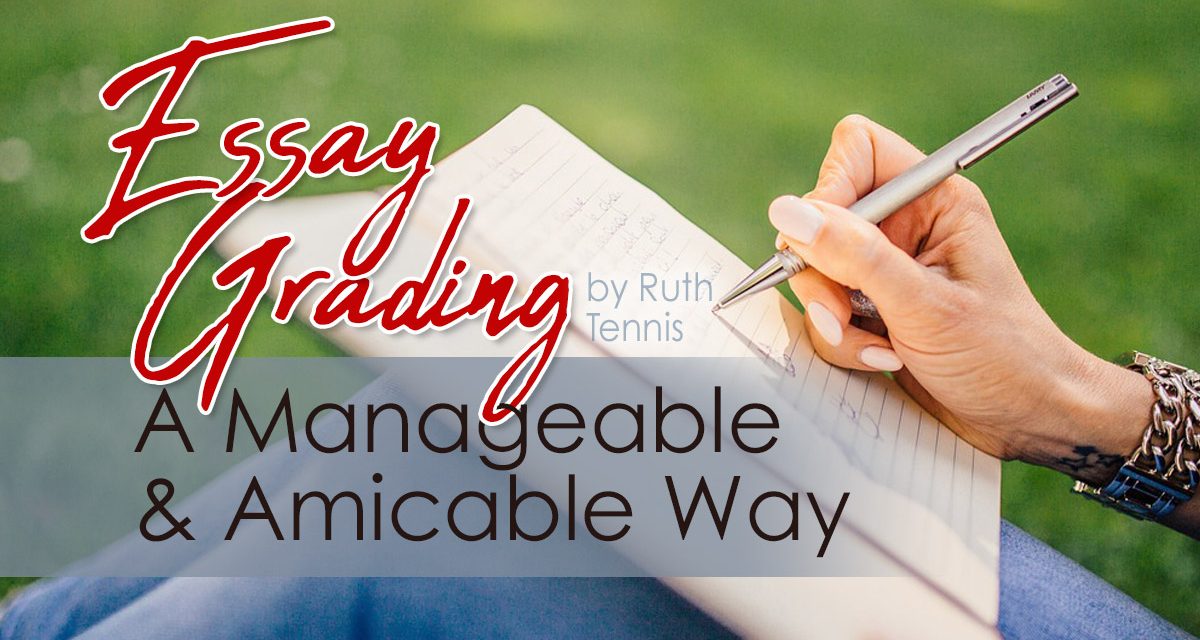Evaluating essays can pose large challenges for parents. For multiple reasons, we can become discouraged and challenged with responding effectively to student writing. What should be “good” for student and parent instead becomes “the bad and the ugly.” Don’t pull out the white flag (or a grading service or AI, for that matter)! Evaluating your student’s writing and encouraging them in this process is important, doable, and can provide wonderful results.
Establish writing goals.
Students sometimes have difficulty seeing the value of an essay assignment. Then the questions begin: “What’s the point? Why are you making me do this?” And then, perhaps, disputes begin. Remember the ultimate goals for essay assignments: creating order out of information, becoming a better thinker and a better communicator, and practicing the art and craft of writing—to name a few. Sharing these reasons with your student may help, but most likely not until they’re 25 and they say to you, “I’m glad you made me write essays every week.” Or maybe not. Either way, putting their thoughts to paper in effective ways will generate invaluable rewards.
Make the assignment real.
Find ways to make an assignment more practical and authentic. One approach we used significantly improved results. For each writing assignment, students jot down the audience and the purpose. For example, the audience of a persuasive paragraph could be, “My friends at co-op.” The purpose? “To convince them to attend my upcoming concert.” Audience and purpose will shape their writing, influencing the paragraph style, the word choice, the arguments made, etc. Now, what if the student changes the audience to “Grandma”? The entire paragraph will change. Assigning an audience and a purpose—and perhaps even sending the finished product to that audience—can help students engage with and understand the purpose for all the hard work that writing requires.
React in phases.
Particularly in the early stages of your student’s writing development, guide your student through. Don’t wait until your student’s done all the writing and is “finished.” Check in with your student during the pre-writing (idea gathering), the drafting, the revising, and the finalizing stages. Help your student see that every writer works through all these stages. Talk out ideas with your student. Ask questions. Help them think through their points.
Guide with a rubric.
Use a grading rubric. For each key skill evaluated, create a point system or a satisfactory/unsatisfactory category. Rubrics clarify your expectations and your assessment, help students identify their strengths and areas for improvement, and make improvement an identifiable task. Many rubrics are available online for free and can be tailored to meet your needs.
This tends to be a real sticking pointTo quote a friend, “Keep the main thing the main thing.” Bad grammar can impede a message, but the message is the main thing. Here are a couple evaluating tips to help you and your student keep the focus on ideas instead.
- If there are lots of different types of errors, make a couple top priority. Model correcting as you work alongside your student, asking for their input on corrections. You may find it helpful to step aside and review a grammar skill and then return to the essay.
- Know what grammar your student is not familiar with. Mark the first time or two an error shows a grammar skill your student is I like to draw a line (NOT in red) to the side and say “fragment,” for example. If you see repeated fragment errors throughout, try writing, “Please check for and fix the rest of the fragments in this essay.”
These are a few ways to diminish essay writing and grading stress. Establishing goals, abilities, and an action plan can also enable them to take the lead. Contact us for more ideas! ~ Ruth





